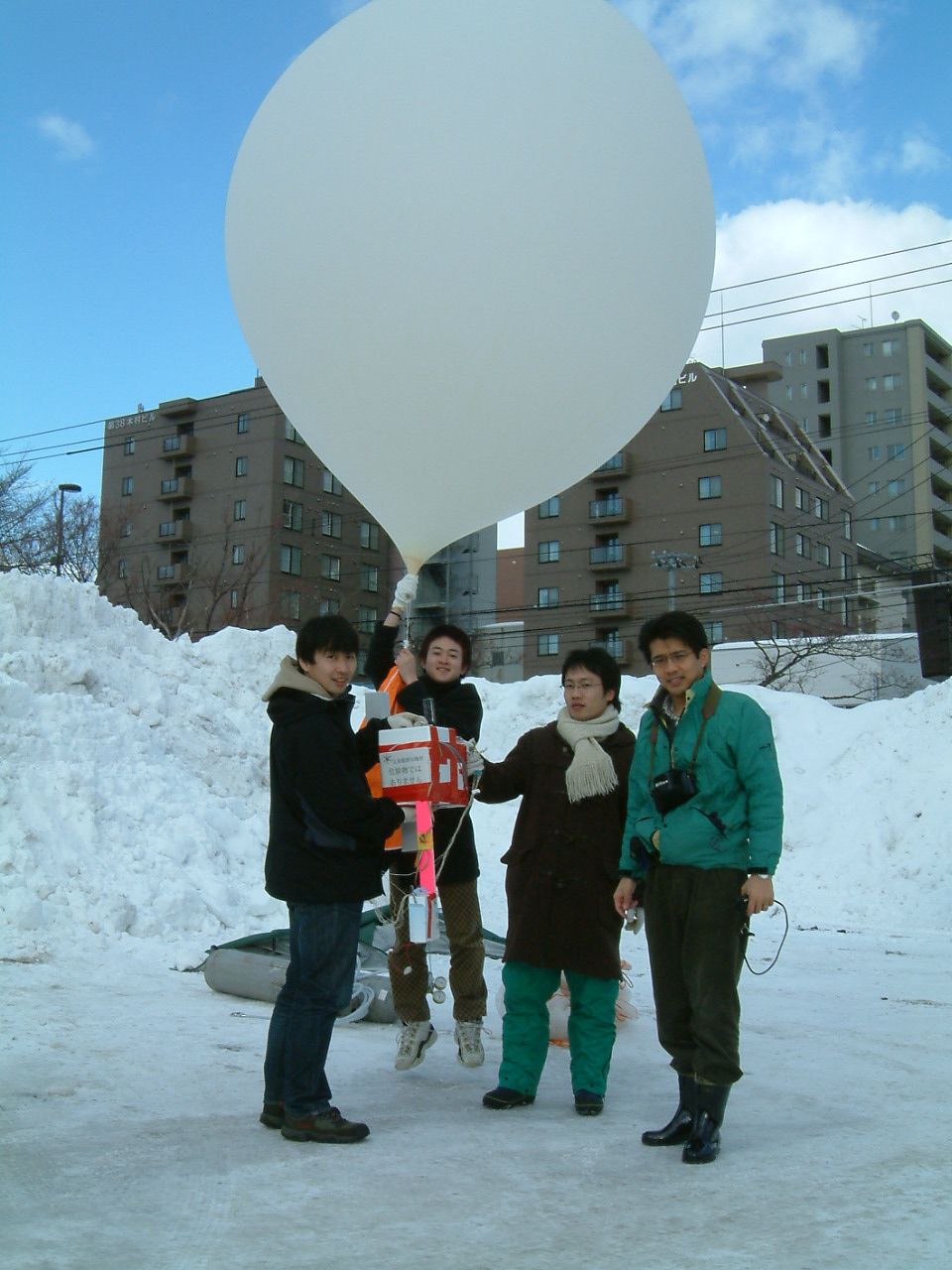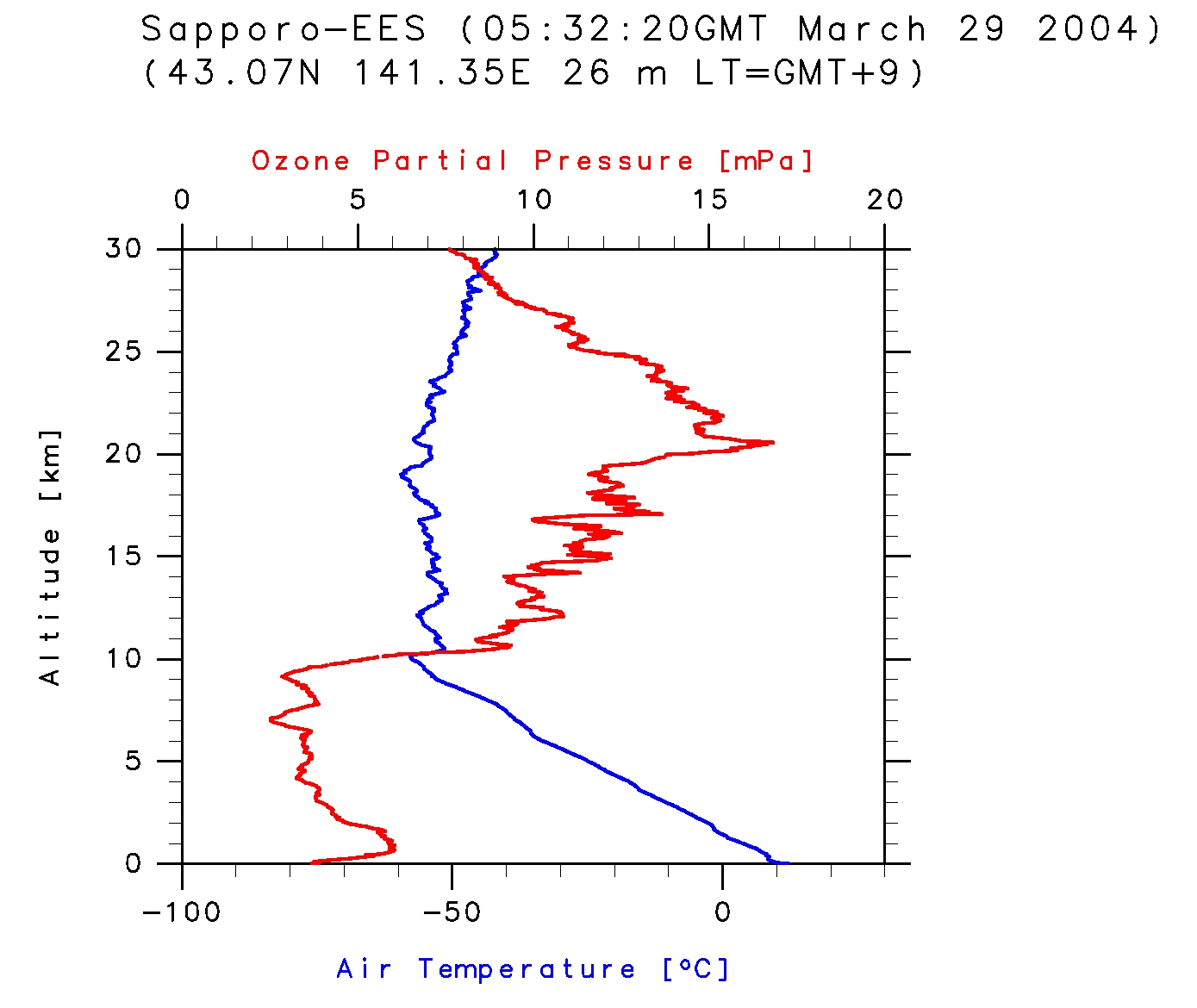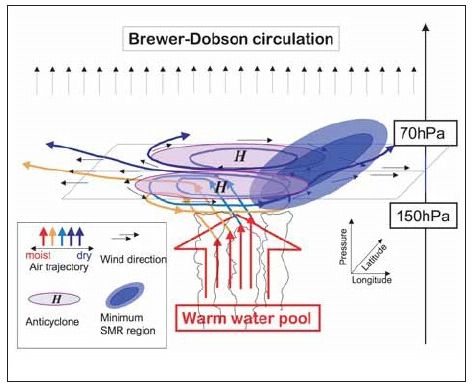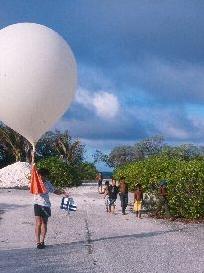The Stratosphere and Ozone
What is the Ozone Layer?
The existence of ozone in the Earth’s atmosphere is a characteristic not found for other planets. Over a long period of time, biological activity accumulated oxygen in the atmosphere that then formed and maintained an ozone layer due to the the sun’s ultraviolet rays (Figure 1). Due to the existence of this ozone layer, maximum air temperature layers have formed at heights of 10-80km alongside the spreading of a rich biosphere at the land surface. This makes up the stratosphere (~50km) and mesosphere which, when combined, are called the Middle Atmosphere.
The Photochemical, Dynamic, and Transport Processes Controlling the Ozone Layer
Ozone layer variations are decided by dynamic and transport processes of a broad spatio-temporal scale, from photochemical processes whereby various atmospheric trace components are entangled, and large-scale disturbances from turbulent diffusion, to average meridional plane circulation. The destruction of the ozone layer, a representative example of global environmental issues, and its Antarctic ozone hole, are strongly connected to Freon emitted from industrial activities. Humans have disrupted the ozone’s photochemical processes. On the other hand, in the meso-layer atmosphere dynamics field, momentum transport due to various atmospheric waves diffused from the troposphere plays an important role. The interaction of waves and average zonal winds has brought about the quasi-biennial oscillation (QBO) of equatorial zonal winds, sudden warming of the stratospheric layer at high latitude regions (Figure 2), and other extremely intriguing geophysical fluid phenomena.
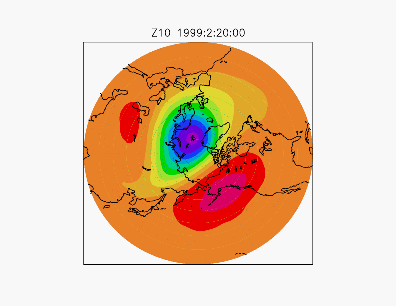
|
An Example of Sudden Stratospheric Warming: This example involves temporal changes at an altitude at 10hPA (the mid-section of the stratosphere, an approximate altitude of 30km) centering on the North Pole. We can see the division, over several days, of the low-pressure (cold color) and high-pressure (warm color) portions. This large scale wave activity even corresponds with occasional temperature increases in the winter of 40℃ at the middle layer of the stratosphere. (To restart the movie, please click the browser’s refresh button!) |
Research Theme – Linking the Troposphere and Stratosphere
The stratosphere and troposphere interact with matter and momentum in several different ways. The linkage or interaction of these spheres is currently one of the hottest research topics in atmospheric science. We run large scale observational campaigns in the tropics, numerical experiments using atmospheric circulation models, and statistical analysis using several types of meteorological data with the awareness of issues such as, “What route do trace components of the troposphere take, and which process do they use, to penetrate the stratosphere and impact the ozone layer” (Figure 3), “In what form does a dynamic coupling of the stratosphere and troposphere manifest itself. In particular, does the stratosphere have a dynamic impact on the troposphere, and if it does, what dynamic processes does this involve?”



